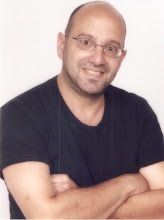[posted 5/18/11 to htthttp://www.blogger.com/img/blank.gifp://wrestlingbabylon.wordpress.com]hthttp://www.blogger.com/img/blank.giftp://www.blogger.com/img/blank.gif
Neurosurgery, October 1999 – A review of the just-published anthology Sports-Related Concussion, edited by Julian E. Bailes, Mark R. Lovell, and Joseph C. Maroon
COMMENT
Reviewer Kevin J. Gibbons called the book “excellent and comprehensive.” The piece said Sports-Related Concussion “merits inclusion in the libraries of all neurosurgeons, as well as any physician acting as a team physician or consultant, including neurologists, psychiatrists, general practitioners, and pediatricians. In addition, physicians involved firsthand as participants, parents, or coaches will benefit from this work.”
Dr. Joseph Maroon’s first co-author, Dr. Julian Bailes, initially would work with the Boston group of chronic traumatic encephalopathy researchers, organized by Chris Nowinski and headed by Dr. Robert Cantu, when Nowinski launched the Sports Legacy Institute in 2007. Bailes later broke off from the Boston group and now directs the Brain Injury Research Institute at West Virginia University.
Maroon’s second co-author, Mark Lovell, also of the University of Pittsburgh Medical Center, would go on to become one of Maroon’s partners in ImPACT Applications, a company marketing concussion-management software.
***
Neurosurgery, September 2000 – “Cerebral Concussion in Athletes: Evaluation and Neuropsychological Testing.” Authors: Joseph C. Maroon, M.D., Mark R. Lovell, Ph.D., John Norwig, A.T.C., Kenneth Podell, Ph.D., John W. Powell, Ph.D., A.T.C., and Roger Hartl, M.D.
COMMENT
The article chronicled “a topic review of studies related to cerebral concussion in athletes, as an aid to improving decision-making and outcomes,” and concluded that neuropsychological testing “seems to be an effective way to obtain useful data on the short-term and long-term effects of mild traumatic brain injury.”
Maroon and co-authors stated that they had developed a series of neurocognitive tests to assist in determining whether and when concussed athletes could return to play – tests already used by both the National Football League and the National Hockey League, and under evaluation at the college and high school levels.
The article cited a study finding that standards promulgated in 1980 by the National Operating Committee for Safety in Athletic Equipment (NOCSAE) had resulted in a marked reduction in the incidence of mild traumatic brain injury in football since that date.
The article reviewed findings for Second-Impact Syndrome (SIS), a term coined in the literature in 1973. “[I]t must be concluded that SIS is an infrequent finding, predominately involves young athletes, and only rarely is fatal.”
The article then discussed the evolution of neuropsychological testing developed at the University of Pittsburgh Medical Center starting in 1989, and eventually taking on the acronym IMPACT (for “Immediate Measurement of Performance and Cognitive Testing”). The authors emphasized that preseason baseline evaluation was essential, and was compared with reevaluation of a concussed player 24 to 48 hours after the injury, and again five days later.
The article moved on to the question “how many concussions are too many?” It quoted Dr. Eliot Pellman, head of the NFL’s concussion committee, as calling concussion management “more of an art than a science.” Pellman is now thoroughly disgraced for, among other things, his own articles in Neurosurgery, beginning in 2003, at a time when the journal was edited by Dr. Michael Apuzzo, a consultant for the New York Giants. One of Pellman’s articles came under heavy criticism by Dr. Robert Cantu, and it was later revealed that Pellman had revised an article subsequent to peer review and without consulting his co-authors. Both the NFL and Major League Baseball dumped Pellman as a consultant.
Maroon and co-authors concluded by predicting that neurocognitive testing – “easily administered” with “low-cost, computerized instruments” – would expand beyond pro and college athletes to become a staple at high schools, and “may help to improve the safety and extend the playing life of athletes in contact sports.”
Published commenters on the article had some praise of it as a review of existing literature and some criticism of it for presenting little or no original research.
Series “Dr. Maroon & ‘Neurosurgery’” will continue in following posts.
Irv Muchnick
Subscribe to:
Post Comments (Atom)

No comments:
Post a Comment